#Sáenz Peña
Text
Pavimentos se renuevan en la calle Roque Sáenz Peña de San Isidro
El municipio de San Isidro informó que realiza trabajos de repavimentación sobre la calle Roque Sáenz Peña. Es una de las arterias que conecta con el bajo. Es en el tramo entre El Fomentista y calle 1, en el Bajo de San Isidro. La obra se realiza con fondos municipales y provinciales, informó la comuna.
La calle Roque Sáenz Peña, en San Isidro, es uno de los típicos accesos al bajo. Desde la…

View On WordPress
0 notes
Text
Pavimentos se renuevan en la calle Roque Sáenz Peña de San Isidro
El municipio de San Isidro informó que realiza trabajos de repavimentación sobre la calle Roque Sáenz Peña. Es una de las arterias que conecta con el bajo. Es en el tramo entre El Fomentista y calle 1, en el Bajo de San Isidro. La obra se realiza con fondos municipales y provinciales, informó la comuna.
La calle Roque Sáenz Peña, en San Isidro, es uno de los típicos accesos al bajo. Desde la…

View On WordPress
0 notes
Text

Horacio Coppola, Buenos Aires - Calle Suipacha esquina Presidente Roque Sáenz Peña (1936)
40 notes
·
View notes
Text

Roque Saenz Peña Building 917, Buenos Aires, Argentina: The building at Roque Sáenz Peña 917, built in 1928 by the engineer Alejandro Enquin, went more than unnoticed, except for those who, when looking up, discovered its imposing dome. Today, after an intensive restoration that lasted three years and included the enhancement of its façade and the technical update in accordance with current regulations, the small nine-storey tower illuminates the Diagonal in yellow and beige.
66 notes
·
View notes
Text

Av. Presidente Roque Sáenz Peña - Buenos Aires - Argentina
#mine#minhas#autorias#brazilian#brasileiro#minhas fotos#me#autorship#Photo#picture#city#buenos aires#argentina#taxi#building#obelisco#no filter#clean sky#sem filtro#setembro#2023#latin america#america
21 notes
·
View notes
Text
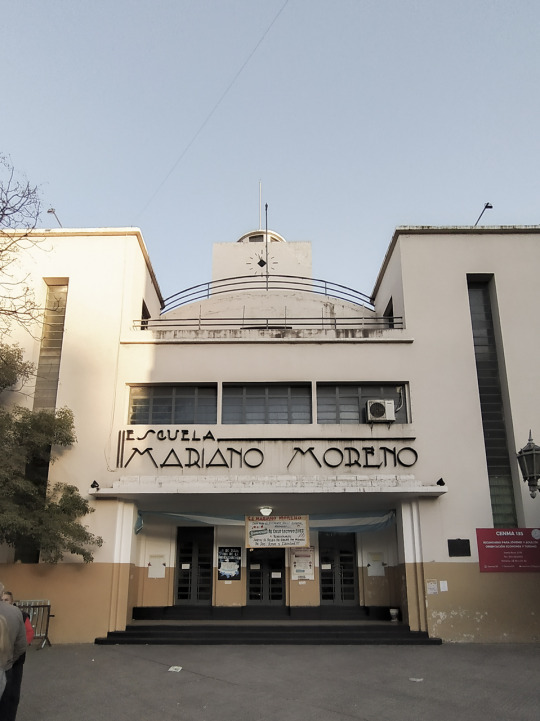
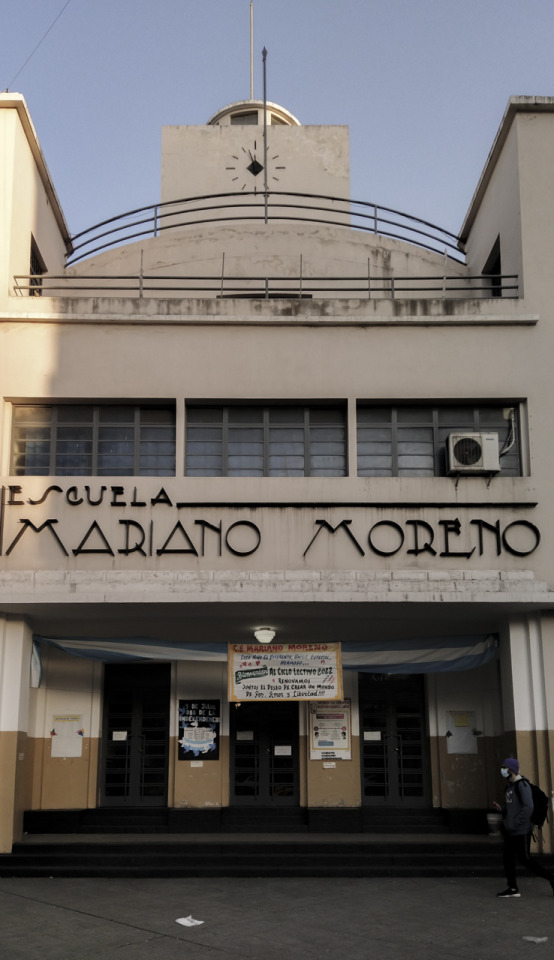
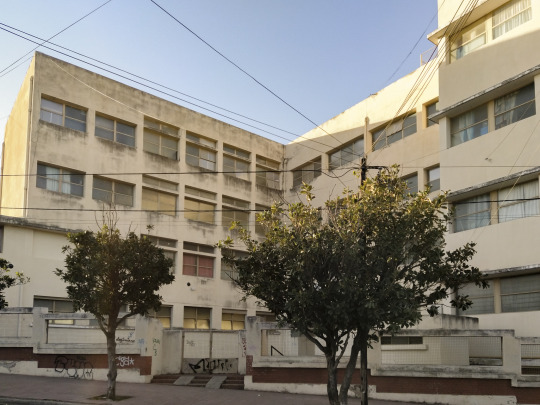
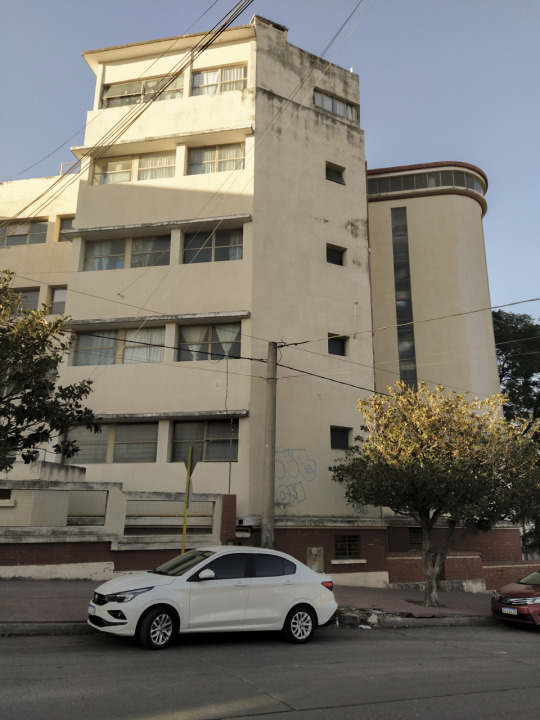
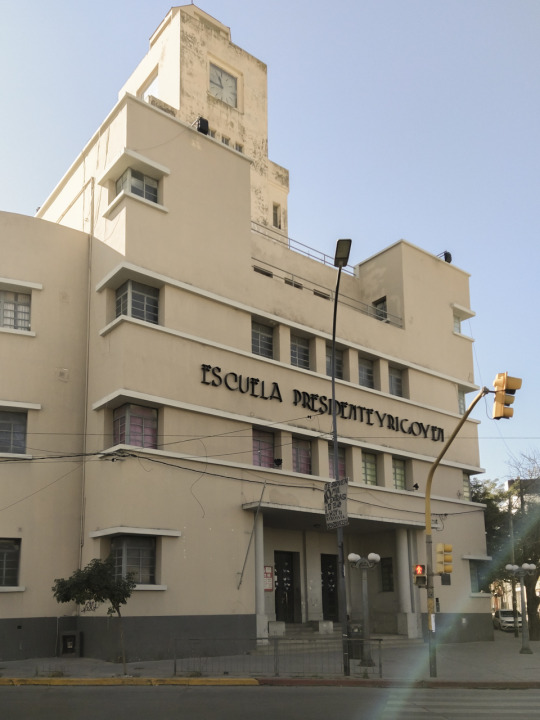
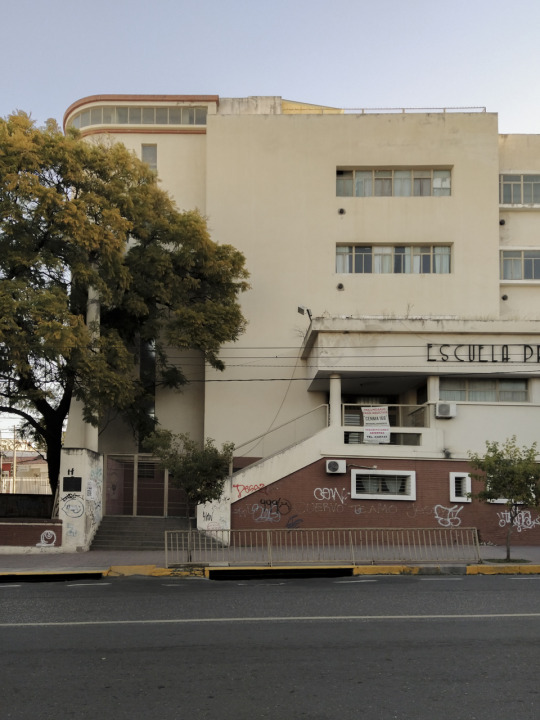

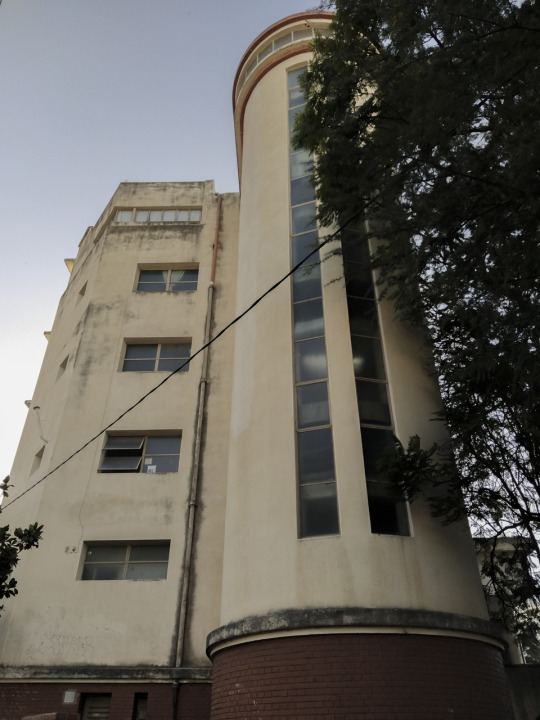
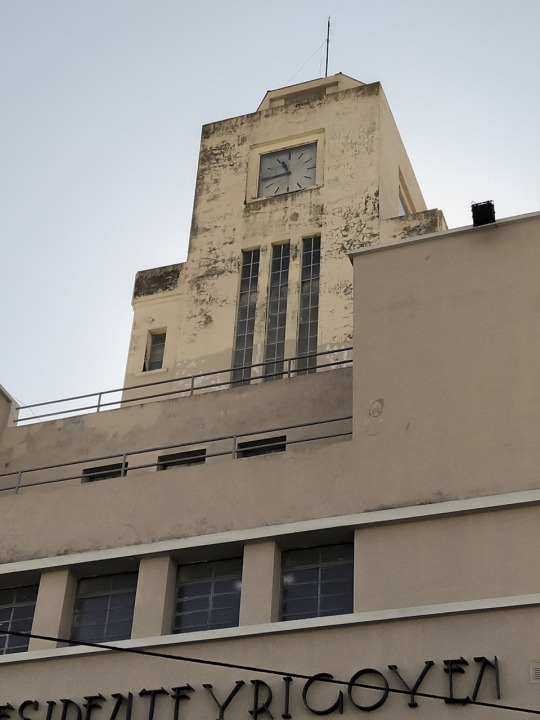

Las escuelas monumentales de Córdoba o “las escuelas de Sabattini”, representan un hito arquitectónico y cultural en la historia de la provincia. Diseñadas como parte del ambicioso plan del Gobernador Amadeo Sabattini cuyo lema de campaña había sido “agua para el norte, caminos para el sur y escuelas en todas partes”. Con más de 150 escuelas construidas en solo cuatro años (1936-1940), se buscó cubrir la creciente demanda educativa.
Se trató de un plan educativo integral en el que la Ley Nacional 1420 establecía la educación común, gratuita, laica y obligatoria. La influencia del racionalismo y el expresionismo europeo, fueron los estilos adaptados y aplicados de manera única. También influyeron los principios del Movimiento Moderno en relación con aspectos higienistas, en cuanto a ventilación e iluminación.
A través del talento y la visión del arquitecto Nicolás Juárez Cáceres, las escuelas se convirtieron en verdaderas obras de arte. Su diseño, a menudo monumental y simétrico, impactaba en el paisaje urbano, contribuyendo a fortalecer la identidad de los barrios donde se encontraban ubicadas. NJC había egresado de la UNC en 1936 y en sus comienzos trabajó junto al arquitecto Lo Celso.
Entre las escuelas más destacadas se encuentran, en la capital cordobesa, la Escuela Presidente Rivadavia, la Mariano Moreno, la Presidente Yrigoyen, la Roque Sáenz Peña y la Presidente Sarmiento, todas construidas entre los años 1937 y 1939.
La visión de Juárez Cáceres trascendió el simple diseño arquitectónico; sus obras fueron un reflejo de los ideales de progreso y funcionalidad propios del movimiento moderno, adaptados de manera única a la realidad local. Aunque su autoría no es exclusiva, su influencia en estas construcciones es innegable.
📷2022
📚 http://archivo.lavoz.com.ar/suplementos/arquitectura/07/02/17/nota.asp?nota_id=45100
Cattaneo, Daniela Alejandra.La arquitectura escolar como instrumento del Estado: contrapuntos nación, provincias en la década de 1930, 2015.
FB Buscando a Salamone.
https://www.archdaily.cl/cl/02-354616/clasicos-de-arquitectura-escuela-presidente-sarmiento-nicolas-juarez-caceres
3 notes
·
View notes
Text
I want to know more about Garcia's past...
With the last letter from my dear friend Watson and considering that we still don't know more about Aloysius Garcia, I tried to remember about the history of Spanish-speaking countries during the victorian era and noticed that there's a lot to analyse in 1892. Just for reference:
It was the 400th anniversary of the "discovery of the Americas", and it was celebrated in Europe and America.
In Spain ocurred the Borbon Restoration and this period was marked by political instability, economic struggles, and social unrest. Alfonso XII died in November 1885. His wife María Christina was still pregnant of his son Alfonso XIII, who was born on 17 May 1886 and became King upon birth Queen Mother María Christina was regent until 1898. Many Spaniards emigrated to America during this period.
Philippines and Puerto Rico were still under Spanish rule, while Cuba was recovering from the Ten Years' War.
Argentina was recovering from the baring crisis of 1890. Former vicepresident Carlos Pellegrini become president until 1892 the succeeded by Luis Sáenz Peña.
Chile was at the end of the Liberal Republic era, there was a civil war in 1891 and started the Parliamentary era. The war saw a confrontation between the Chilean Army and the Chilean Navy, siding with the president José Manuel Balmaceda and the congress, respectively. This conflict ended with the defeat of the Army and the presidential forces, and with President Balmaceda committing suicide as a consequence of the defeat. Saltpetre was the principal export, extracted by british companies.
México Porfirio Díaz was president (again) and this period is known as Porfiriato (Porfiriate). There were significant economic, technological, social, and cultural changes during this period.
In Paraguay the banking crisis got bigger and there was an aborted Liberal revolt in 1891.
Perú was in a period known has National reconstruction era. The government started to initiate a number of social and economic reforms in order to recover from the damage of the War of the Pacific and the chilenization in Tacna and Arica.
Brasil (I know they speak Portuguese, but I'm in LatAm, we are in the same neighbourhood, so it's important) Pedro II was deposed on November 15, 1889, by a Republican military coup led by General Deodoro da Fonseca, who became the country's first de facto president through military ascension. This period is known as República Velha (Old Republic).
There's a lot more considering other countries like Colombia or Uruguay, but I need to read a lot more to understand a bit more.
(For now, I like the idea that he could be some rich Spaniard that had a shady business with some Englishman related to saltpetre in Peru-Bolivia-Chile)
15 notes
·
View notes
Text
History of Argentina.
Argentina declared independence on July 9, 1816 at the Congress of Tucumán. The new country became known as the United Provinces of the Río de la Plata. The beginning of the Argentine government was uncertain and unstable.
The history of Argentina is the chronology of events from the beginning of the early human population in the current territory of the Argentine Republic to our very present day.

José de San Martín, father of the country of Argentina, deployed the military to lay the foundations for independence, and undertook campaigns to make Chile and Peru also independent. Manuel Belgrano also promoted Argentine independence and fought on the front line to consolidate it.
The 1922 elections were the second held under the Sáenz Peña Law, which established the secret and compulsory voting for men over 18 years of age.

4 notes
·
View notes
Text
so I reblogged a post on my main blog a few days ago adding that my country has compulsory voting, a concept I'm definitely in favour of. let me expand on that.
compulsory voting was introduced in a very important law in 1912, the Sáenz Peña Law (named after the president that promoted it), in which every Argentinian citizen from the age of 18 was required to vote. it wasn't, as many think, even just for men (though probably as an oversight, I love that story and will share it later). so participation in one of the few ways a regular citizen has to actually influence the state of the country even a little bit is a duty rather than a right and no candidate or party for which it may be convenient that less people vote can actually influence that, what a novel idea.
currently, the law states that it's compulsory from ages 16 above, but with no sanction for minors (16 and 17 year olds) nor for people above 70 years old. and, really, there's no meaningful sanction for anyone. if you do not participate and it's absolutely obvious you could have (for example, you were near the school you were assigned to that day and not like, on a trip or something), you have to pay a fine. of $50 pesos. for those not in the know, that is way less than a quarter of a dollar, you can't buy anything with $50 (anymore).
but even without meaningful sanctions, voting turnout is always higher than 75%, generally higher than 80% (at least since we have direct voting and not a shitty system like the US). and, frankly, I believe we have better politics than a lot of countries. don't get me wrong, it's still shit. you still have two meaningful parties winning all the time, the center-right one and the center-left one that's becoming more and more center-right every day. but guess what. having to vote means you become involved in politics. there's a stereotype or a joke or whatever that says that every Argentinian thinks they'd know how to run the country better than its leaders but the reality is that that's because WE FUCKING CARE. it's important to many of us to have living wages and worker's rights, and women's rights, and lgbt+ rights. every day you see a new protest or march, lately it's been residents (hospital workers) and the workers that make car tires that have been cutting important streets off to get recognised and make the people in power have to give a shit about them. and it's really easy to cut streets off BECAUSE WE HAVE A HISTORY OF DOING IT. SINCE THE EARLY 20TH CENTURY.
I'm not saying we're great, we're probably heading to a hyperinflation BECAUSE OF OUR LEADERS, NOT THE PEOPLE THAT ELECT THEM. I want to stress that in the history of Argentina, there has been ONE (JUST ONE) president that was openly skewing right that was actually elected by the people (Macri in 2015) and didn't get there by commiting insane amounts of voter fraud or making a fucking coup d'etat. this does show a dangerous precedent, sure, but there are other factors at play (like the Radicals, the other major party aside form the Peronists, not having a chance to win after 2001 so they had to support him to get some positions lmao (I have to talk about 2001 sometime (it was the worst year ever and not because of anything happening in the US))).
anyway that's my thoughts on compulsory voting in Argentina lol
3 notes
·
View notes
Text

#ElEscenarioDelMundo
🎭 Teatro: “¿USTED VINO POR EL AVISO?
🗯 Obra de de caracter cómico, una adaptación personal que nos narra la vida de cuatro mujeres, un anuncio en el periódico y mil enredos, situaciones y confusiones donde todo puede suceder. Esta obra va a ser realizada por los alumnos del taller de nuestra agrupación, apoyados por algunos miembros del elenco.
🎭 Teatro: “EL FONDO DEL POZO”
✍️ Dramaturgia:Alvaro Schwarz Rivero
🗯 Drama psicológico que nos cuenta sobre un abogado que espera ser entrevistado, sin embargo, guarda un secreto. Él deberá decidir, si se aferra a su realidad o enfrenta las acusaciones que se le increpan. Esta segunda muestra teatral va a ser realizada por actores del elenco de la agrupación teatral.
👥 Elenco: Taller de Teatro
📢 Dirección: Ivonne Vidal
© Producción: Grupo de Teatro Zona Experimental.

📌 FUNCIONES:
📆 Viernes 30, Sabado 31 de Agosto y Domingo 01 de Septiembre
🕗 8:00pm.
🏡 Teatro de la Casa Cultural Mocha Graña (Paseo Sáenz Peña 107 - Barranco)
🎫 Entrada: S/.40
📱 Reservas: 952-437-171 [WhatsApp]
0 notes
Text
Lagunas, documental con la participación de la escritora Liliana Bodoc,llega al Cine Arte Cacodelphia
El viernes 16 de agosto a las 19hs se estrena en el Cine Arte Cacodelphia, Av. Pres. Roque Sáenz Peña 1150, el documental Lagunas del director mendocino Federico Cardone, que cuenta con la participación de la escritora santafesina Liliana Bodoc fallecida en 2018. La película podrá verse también el viernes 23 a las 19hs. La función de estreno contará con la presencia del director y de Galo Bodoc,…

View On WordPress
0 notes
Text
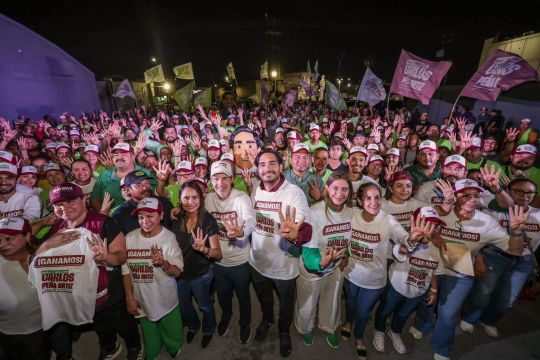
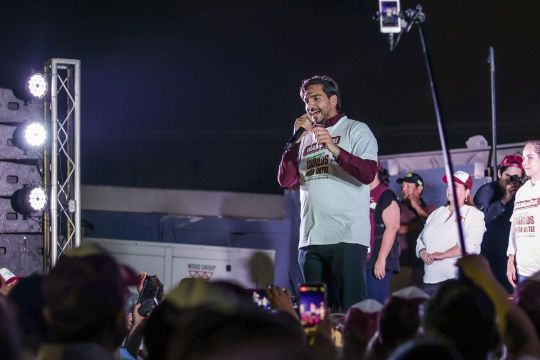
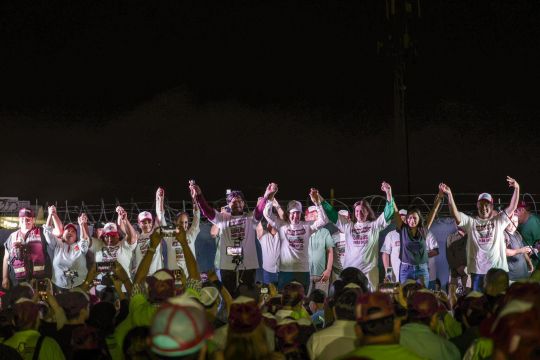
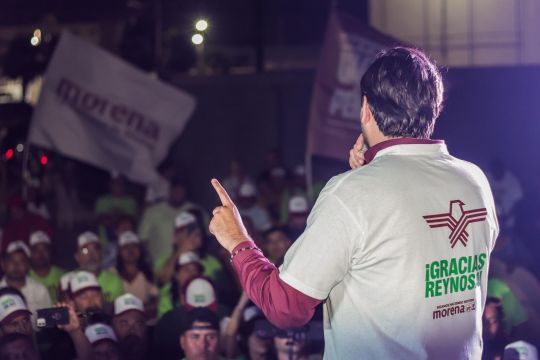



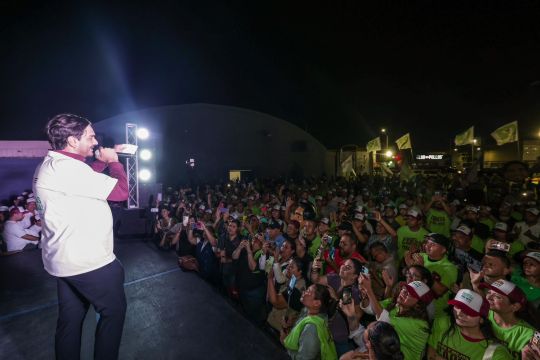
Victoria Arrolladora de Carlos Peña Ortiz en Reynosa
Carlos Peña Ortiz y Maki Ortiz: Triunfo Decisivo en las Elecciones de Reynosa.
Reynosa, Tamaulipas.-Carlos Peña Ortiz ha obtenido una victoria contundente en las elecciones municipales de Reynosa, reafirmando su liderazgo con un abrumador 54.6289% de los votos, de acuerdo al último PREP de la 1:40 AM. Peña Ortiz, candidato por la coalición "Sigamos Haciendo Historia" (Morena, PT y Verde Ecologista de México), superó ampliamente a sus competidores más cercanos, consolidando su posición como alcalde reelecto de la ciudad.
Con un total de 52,405 votos, Peña Ortiz dejó atrás a Luis René Cantú Galván (PAN, PRI, PRD) con 22,536 votos (23.4923%), Rigoberto Ramos Ordóñez (Movimiento Ciudadano) con 14,485 votos (15.0997%) y Mauricio Arturo de Alejandro Martínez (PRD) con 3,782 votos (3.9424%).
En el evento de la celebración, Carlos Peña Ortiz agradeció a los ciudadanos por su apoyo y participación en esta jornada democrática. En su discurso, destacó la importancia de la unidad y el trabajo en equipo para seguir construyendo un mejor Reynosa.
"Estoy profundamente agradecido con cada uno de ustedes. Este triunfo es gracias a su apoyo y compromiso. Vamos a seguir trabajando juntos para transformar nuestra ciudad," expresó Peña Ortiz emocionado.
El presidium estuvo conformado por figuras destacadas que acompañaron a Peña Ortiz en esta celebración de la victoria. Entre ellos, la Dra. Maki Esther Ortiz Domínguez, candidata al Senado de la República por el Partido Verde Ecologista de México, También estuvieron presentes Paola Lopez, senadora por Tamaulipas, Valentina Cota Victoria, secretaria de mujeres de Morena en Tamaulipas; Jorge Santa Ana Castro, dirigente municipal del Partido Verde Ecologista de México; Olalla Yadira Delgadillo Chapa, representante del Partido del Trabajo en Reynosa.
Maki Ortiz, en su intervención, destacó el esfuerzo conjunto y la dedicación del equipo para lograr este triunfo. "Gracias a todos ustedes por su compromiso y trabajo incansable. Este es solo el comienzo de un nuevo capítulo para Reynosa y Tamaulipas," declaró la Dra. Ortiz.
En sus palabras, Peña Ortiz resaltó la oportunidad histórica de tener dos senadores de Reynosa, agradeciendo especialmente a José Ramón Gómez Leal, candidato al Senado por Morena, y a Claudia Hernández Sáenz, candidata a diputada federal del distrito 2.
"Hoy es un día histórico para Reynosa. Vamos a seguir trayendo beneficios a nuestro municipio, trabajando juntos para lograr un futuro mejor," afirmó Peña Ortiz.
Peña Ortiz también invitó a sus opositores a unirse a este proyecto, enfatizando que ahora es tiempo de trabajar por el bien de todos los ciudadanos, sin importar los colores partidistas. "La campaña ya pasó, ahora somos alcaldes de todos y vamos a seguir trabajando para que Reynosa pueda seguir progresando," concluyó.
@Carlos Peña @Maki Ortiz #CarlosPeñaOrtiz #MakiOrtiz #Reynosa #Elecciones2024 #Morena #PT #VerdeEcologista #SigamosHaciendoHistoria #JoséRamónGómezLeal #ClaudiaHernándezSáenz #ValentinaCota #JorgeSantaAna
0 notes
Text
Organismos de derechos humanos y sindicatos de la región apoyan la marcha universitaria de mañana martes 23
La Comisión Memoria Verdad y justicia Zona Norte y la Mesa de Organismos de Derechos Humanos se encontrará, a las 15, en Sáenz Peña e Hipólito Yrigoyen, anunció por redes sociales las entidad. El sindicato de docentes privados SADOP Zona Norte se encontrará a las puertas de Congreso, a las 15, anunció, asimismo. La adhesión de diferentes campos de la sociedad es altísima y se espera gran…

View On WordPress
0 notes
Text

Malecon Saenz Peña, Promenade, Lima, Peru: Sáenz Peña Promenade is the meeting point of art, bohemia, history and the sea. It is probably the main gateway to the heritage area of Barranco, with its beautiful mansions from the beginning of the twentieth century. A large part of the district's cultural and gastronomic activity takes place around Sáenz Peña. it forms one of the most beautiful sets of residences in Lima, most of them from the beginning of the 20th century, with marked European influence, highlighting the French style.
89 notes
·
View notes
Text
Para este fin semana, en el cronograma de eventos se destacan los siguientes:
Viernes 26
18:30: Verano Juntos: aventuras en el bosquecito.
Celebración del Día Mundial de la Educación Ambiental
Propuestas para reflexionar, actuar y comprometerse.
Recorrido guiado, juegos, actividades artísticas y música en vivo.
Actividad orientada a toda la familia.
18:30: Cine: Patos.
Película apta para todo público.
Cine Belgrano: bulevar Santa Fe 555.
También el sábado 27, el domingo 28, el lunes 29 y el martes 30.
20:00: Cine: Priscilla.
Película incluida en el Espacio INCAA.
Cine Belgrano: bulevar Santa Fe 555.
También el sábado 27, el domingo 28, el lunes 29 y el martes 30.
21:00: Otras voces en El Metro.
Presentación del Trío Sin Tiempo.
Centro Recreativo Metropolitano La Estación: avenida Roque Sáenz Peña 502.
21:30: Club house CRAR.
Ciclo de eventos.
Círculo Rafaelino de Rugby (CRAR): Ruta 70 oeste.
Reserva al 3492 528 128
22:15: Cine: Cuando acecha la maldad.
Película incluida en el Espacio INCAA.
Cine Belgrano: bulevar Santa Fe 555.
También el sábado 27, el domingo 28, el lunes 29 y el martes 30.
Sábado 27
20:00: Verano Juntos: música en Carcabuey + pasaje gastronómico.
Pasaje Carcabuey.
20:00: Punto Sacripanti.
Centro comercial a cielo abierto.
Pasteur esquina Sacripanti.
Música: rock nacional.
Santos Barriles: 3 de Febrero 578.
Fuente: Municipalidad de Rafaela
https://rafaeladigital.com/noticias/los-eventos-del-fin-de-semana-en-rafaela/?feed_id=4715
0 notes
Link
0 notes